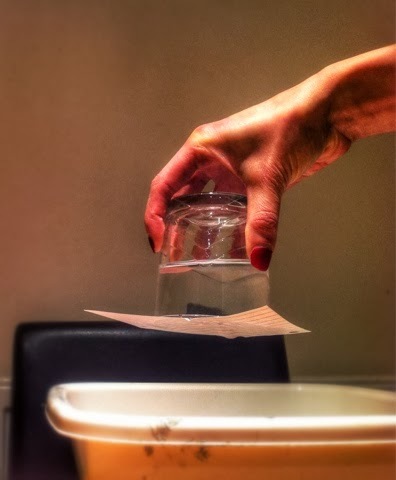The magician's water glass
 A magician fills a glass with some water, lays a glossy postcard on top, and then flips the entire assembly while holding the postcard firm to the bottom of the glass. He then removes his hand and the postcard stays in place, keeping the water in the glass.
A magician fills a glass with some water, lays a glossy postcard on top, and then flips the entire assembly while holding the postcard firm to the bottom of the glass. He then removes his hand and the postcard stays in place, keeping the water in the glass.
How is this possible?
This section requires Javascript.
You are seeing this because something didn't load right. We suggest you, (a) try
refreshing the page, (b) enabling javascript if it is disabled on your browser and,
finally, (c)
loading the
non-javascript version of this page
. We're sorry about the hassle.
One atmosphere is equal to 14 pounds per square inch, or ≈ 101 kilonewtons per meter squared.
This is the conversion of 1 atm to Newtons per meter squared. Atm (short for atmosphere) is a unit used for pressure and it's the magnitude of the force exerted by Earth's atmosphere on one square meter.
So in this problem the force that is exerted on the paper is equal to the force of the gravitational pull the Earth is exerting on the water. The net force is zero, so there is no acceleration (or in simpler terms, gravity is having no noticeable effect.)